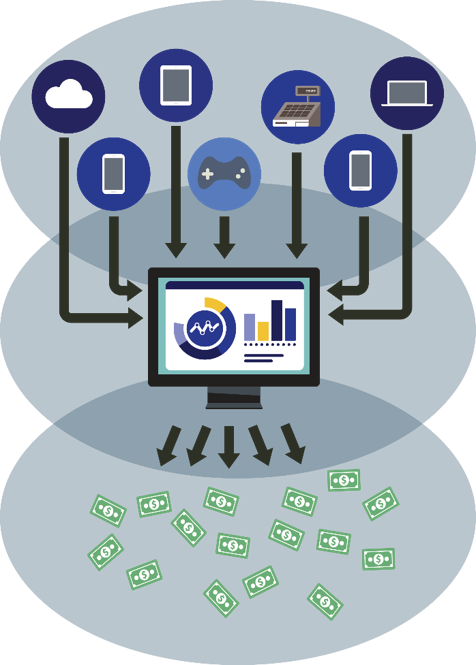In the past, data science has focused on reducing costs, dropping unproductive business segments, promoting top performers and otherwise increasing efficiency. The companies that were using data science as a way to improve themselves are now turning it into other ways to make more money.

The best examples come from Asian gaming firms. They have free-to-play game models that have in-game purchases. The companies track the way that consumers are purchasing those extra objects and which objects are purchased more. They turn this data into ways to make their games more profitable based on the way that consumers are behaving and buying.
Gaming companies are not the only ones using Data Science Monetization. We’re seeing a lot of it in the advertising space as well. Oracle spent $600M on Moat in order to perform cross-platform ad analytics that are not just focused on the impressions and views, but much deeper information as well. Oracle wasn’t the only one to be looking into this kind of purchase. Nielsen was also making acquisitions in the space as well.
While it may seem like this technology may be more applicable for B2C companies, we’re seeing it in B2B spaces as well. Companies that are providing services are working with value-based pricing right now. Corum client Endeavor Commerce was sold to Vendavo in order to allow them to use intelligent pricing capabilities right inside of their sales process. The companies that can provide solutions in the data science monetization space are being highly sought after for acquisitions.
Data Science Monetization was just one of our Top Ten Disruptive Trends for 2018. We discussed all of the trends on our Forecast 2018 webcast in January. You can take a listen to the webcast to learn more about the trends or take a look at our other posts about the trends.
